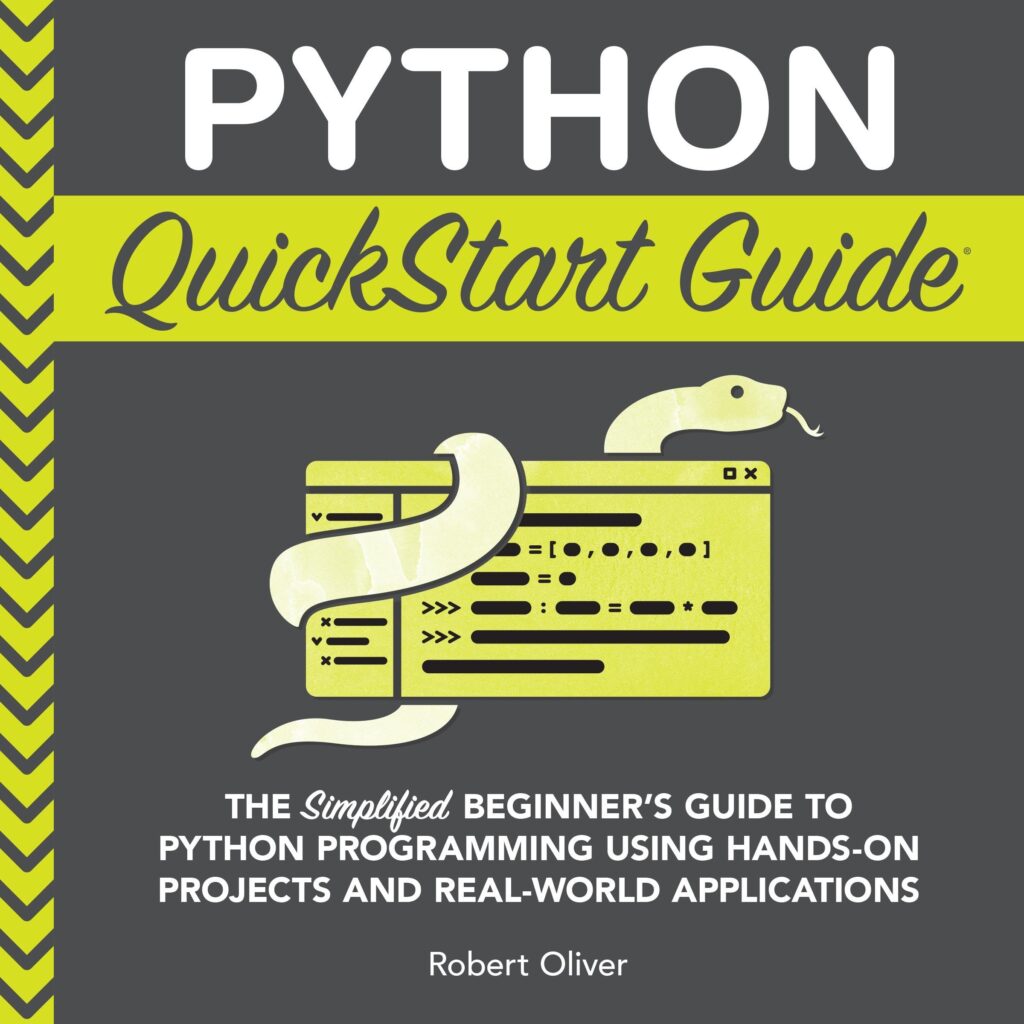
The Python standard library provides a wealth of tools for handling exceptions, but among these, sys._current_exceptions stands out as a lesser-known but powerful feature. This attribute is a mapping of the current active exceptions in the interpreter. Specifically, it holds a dictionary where each thread’s current exception state is stored, enabling you to inspect and understand what exceptions are currently being processed.
To grasp how sys._current_exceptions fits into the broader exception handling mechanism, we must first ponder how exceptions propagate through Python code. When an exception is raised, Python looks for a matching except clause in the current scope and, if none is found, continues to look up through the call stack. If it reaches the top level with no matching handler, the interpreter halts execution and produces a traceback.
Now, let’s delve into the specifics of sys._current_exceptions. This attribute is particularly useful in multi-threaded environments where exceptions may occur in different threads at the same time. Each thread maintains its own state, and sys._current_exceptions allows you to peek into the exceptions that are currently being processed in all threads. The structure is akin to:
{
thread_id_1: (exception_type, exception_instance, traceback),
thread_id_2: (exception_type, exception_instance, traceback),
...
}
Here, thread_id_X represents the unique identifier for each thread, while the tuple holds the exception type, the exception instance, and the traceback object. This encapsulation provides a comprehensive snapshot of the exception state across threads, which is invaluable when diagnosing complex issues in concurrent applications.
To see this in action, consider the following code snippet that simulates exception handling in multiple threads:
import sys
import threading
def thread_function(name):
try:
if name == "Thread-1":
raise ValueError("An error occurred in Thread-1")
except Exception:
# Capture the current exceptions
current_exceptions = sys._current_exceptions
print(current_exceptions)
threads = []
for i in range(2):
thread = threading.Thread(target=thread_function, args=(f"Thread-{i+1}",))
threads.append(thread)
thread.start()
for thread in threads:
thread.join()
In this example, we create two threads, one of which raises a ValueError. When the exception is caught, we print the current exceptions stored in sys._current_exceptions. This insight can be particularly helpful for debugging, as it allows you to understand the state of exceptions without disrupting the flow of your program.
However, while sys._current_exceptions can be a powerful ally in exception management, it’s essential to use it judiciously. The attribute is considered a private API, and its behavior may change without warning in future Python releases. As such, it should be used primarily for debugging and logging purposes, rather than in production code where stability is paramount.
Amazon Kindle 16 GB (newest model) - Lightest and most compact Kindle, now with faster page turns, and higher contrast ratio, for an enhanced reading experience - Matcha
$109.99 (as of December 9, 2025 08:27 GMT +00:00 - More infoProduct prices and availability are accurate as of the date/time indicated and are subject to change. Any price and availability information displayed on [relevant Amazon Site(s), as applicable] at the time of purchase will apply to the purchase of this product.)Unpacking the Mechanics of Exception Handling in Python
Understanding the mechanics of exception handling in Python requires a close examination of the underlying principles that govern how exceptions are raised and processed. When an exception is triggered, Python’s control flow shifts from the normal execution path to the error-handling mechanism. This shift is initiated by the raise statement, which can occur in any part of the code, from deeply nested function calls to high-level logic flows.
Once an exception is raised, Python begins its search for an appropriate except clause to handle the exception. This search occurs in a bottom-up fashion, meaning that the interpreter starts from the current scope and moves up through the call stack. If it reaches the top-level of the stack without finding a suitable handler, the interpreter halts execution and presents the user with a traceback, which details the call stack at the moment the exception was raised.
However, the use of sys._current_exceptions adds another layer of complexity and utility to this process, especially in the context of multi-threaded applications. Each thread operates independently, with its own stack and exception state. The sys._current_exceptions attribute provides a central point from which developers can inspect the exception states of all threads concurrently.
The structure of sys._current_exceptions allows developers to quickly assess the types of exceptions that are currently being processed without needing to alter the control flow of the program. For example, think a scenario where multiple threads may raise different exceptions based on their individual logic. By accessing sys._current_exceptions, you can retrieve a snapshot that details which exceptions are active across all threads.
To illustrate this concept further, let’s look at another example. In this scenario, we create a threaded environment where each thread potentially raises a different type of exception:
import sys
import threading
import time
def thread_function(name):
try:
time.sleep(1) # Simulate some work
if name == "Thread-1":
raise ValueError("Value error in Thread-1")
elif name == "Thread-2":
raise TypeError("Type error in Thread-2")
except Exception:
# Capture the current exceptions in the thread
current_exceptions = sys._current_exceptions
print(f"Current exceptions in {name}: {current_exceptions}")
threads = []
for i in range(2):
thread = threading.Thread(target=thread_function, args=(f"Thread-{i+1}",))
threads.append(thread)
thread.start()
for thread in threads:
thread.join()
In this example, we simulate two threads that may raise different exceptions. When an exception occurs, we again print the current exceptions captured by sys._current_exceptions. Notably, this gives us a quick overview of the exceptional states in our threaded application, making it easier to debug issues that arise in complex concurrent environments.
Despite the benefits, developers should remain cautious when using sys._current_exceptions. As a private API, its usage is not guaranteed to remain consistent across Python versions, and relying on it for core functionality could lead to fragile code. It’s best suited for debugging and development scenarios where understanding the state of exceptions is important. In production code, other established patterns of exception handling should be preferred to ensure stability and maintainability.
Practical Applications: Using Current Exception State
When using sys._current_exceptions for practical applications, developers can gain deep insights into the exception states of their applications, particularly in concurrent systems. Consider a scenario where you’re building a server that handles multiple client connections concurrently. Each connection is managed in a separate thread, and exceptions may arise from various sources such as network failures, invalid data, or timeouts. By accessing sys._current_exceptions, you can monitor these exceptions as they occur, thereby providing a robust mechanism for error tracking and reporting.
Let’s explore a more elaborate example that demonstrates how to use sys._current_exceptions within a server context. In this example, we will create a simple threaded server that processes client requests, potentially raising exceptions during the processing phase:
import sys
import threading
import socket
def handle_client_connection(client_socket):
try:
# Simulate handling a request
request = client_socket.recv(1024)
if not request:
raise ConnectionError("No data received")
# Process the request (in a real scenario, this could raise various exceptions)
print(f"Received request: {request.decode()}")
except Exception:
# Capture the current exceptions
current_exceptions = sys._current_exceptions
print(f"Current exceptions: {current_exceptions}")
finally:
client_socket.close()
def start_server(host='127.0.0.1', port=9999):
server = socket.socket(socket.AF_INET, socket.SOCK_STREAM)
server.bind((host, port))
server.listen(5)
print(f"Server listening on {host}:{port}")
while True:
client_socket, addr = server.accept()
print(f"Accepted connection from {addr}")
client_handler = threading.Thread(target=handle_client_connection, args=(client_socket,))
client_handler.start()
if __name__ == "__main__":
start_server()
In this server example, each client connection is handled in its own thread. If an error occurs while receiving data from a client, the exception is caught, and the current exceptions state is printed using sys._current_exceptions. This allows you to gain visibility into the types of exceptions that have occurred across all threads without interrupting the server’s operation.
Moreover, this approach can be instrumental when implementing logging mechanisms. Instead of relying solely on traditional logging for error reporting, you can enhance your logging strategy by incorporating current exception states:
import logging
def handle_client_connection(client_socket):
try:
request = client_socket.recv(1024)
if not request:
raise ConnectionError("No data received")
print(f"Received request: {request.decode()}")
except Exception as e:
current_exceptions = sys._current_exceptions
logging.error(f"Exception occurred: {e}, Current exceptions: {current_exceptions}")
finally:
client_socket.close()
This snippet demonstrates how you can log the exception details along with the current exceptions state. Such comprehensive logging can significantly simplify debugging, especially in complex applications where multiple threads are active.
However, while sys._current_exceptions provides valuable insights, it’s important to remember that its use should be limited to debugging and monitoring contexts. In production environments, relying on robust exception handling strategies, such as structured exception classes and well-defined error handling paths, is important for maintaining application stability. By using sys._current_exceptions judiciously, you can enhance your ability to diagnose issues in multi-threaded applications without compromising code reliability.
Avoiding Common Pitfalls with sys._current_exceptions
When working with sys._current_exceptions, there are several common pitfalls that developers should be aware of to avoid potential issues in their applications. First and foremost, it is important to remember that this attribute is considered a private API. As such, its behavior can change between Python versions. Relying on it for core application logic can lead to fragile code that breaks unexpectedly when upgrading Python. Instead, it is best suited for debugging and logging, where you need to inspect the current state of exceptions without altering the control flow.
Another pitfall arises from the misunderstanding of threading and how exceptions are propagated. Since sys._current_exceptions provides a snapshot of exceptions across all threads, developers may mistakenly assume that they can safely modify or act on these exceptions directly. However, because exceptions are context-specific, simply accessing sys._current_exceptions in a thread does not mean that you can resolve or handle those exceptions in that same context. Each thread has its own call stack, and attempting to manipulate exceptions from one thread in another can lead to unpredictable behavior.
Here’s an illustrative example that highlights this issue:
import sys
import threading
import time
def worker():
try:
time.sleep(2)
raise RuntimeError("Something went wrong in the worker thread")
except Exception:
# Capture the current exceptions
current_exceptions = sys._current_exceptions
print(f"Current exceptions in worker: {current_exceptions}")
def main():
thread = threading.Thread(target=worker)
thread.start()
thread.join()
# Attempting to access current exceptions outside of the worker context
# This may not behave as expected
print("Outside worker, current exceptions:", sys._current_exceptions)
if __name__ == "__main__":
main()
In this example, the worker thread raises an exception, which is captured in the context of that thread. However, when we access sys._current_exceptions from the main thread, we might not get the expected results, as the exception state is thread-specific. This reinforces the idea that while sys._current_exceptions can provide valuable insight, it should not be used as a means to control or resolve exceptions across threads.
Furthermore, developers should be cautious about how often they access sys._current_exceptions. Excessive querying of this attribute can lead to performance issues, especially in applications that are already under heavy load or in tight loops. Instead, it’s prudent to access this information sparingly, primarily during error handling or when necessary for debugging purposes.
Lastly, when logging the current exceptions, ensure that you’re capturing all relevant details without overwhelming your logs with redundant information. A well-structured logging strategy can help mitigate this issue. For instance, ponder using logging levels effectively to categorize the severity of exceptions:
import logging
def handle_client(client_socket):
try:
request = client_socket.recv(1024)
if not request:
raise ConnectionError("No data received")
except Exception as e:
current_exceptions = sys._current_exceptions
logging.error(f"Exception: {e}, Current exceptions: {current_exceptions}")
finally:
client_socket.close()
In this logging example, we capture the current exceptions during error handling while maintaining clarity in the logs. By being selective about what and when to log, you can ensure that your logging remains effective without becoming a source of clutter.












